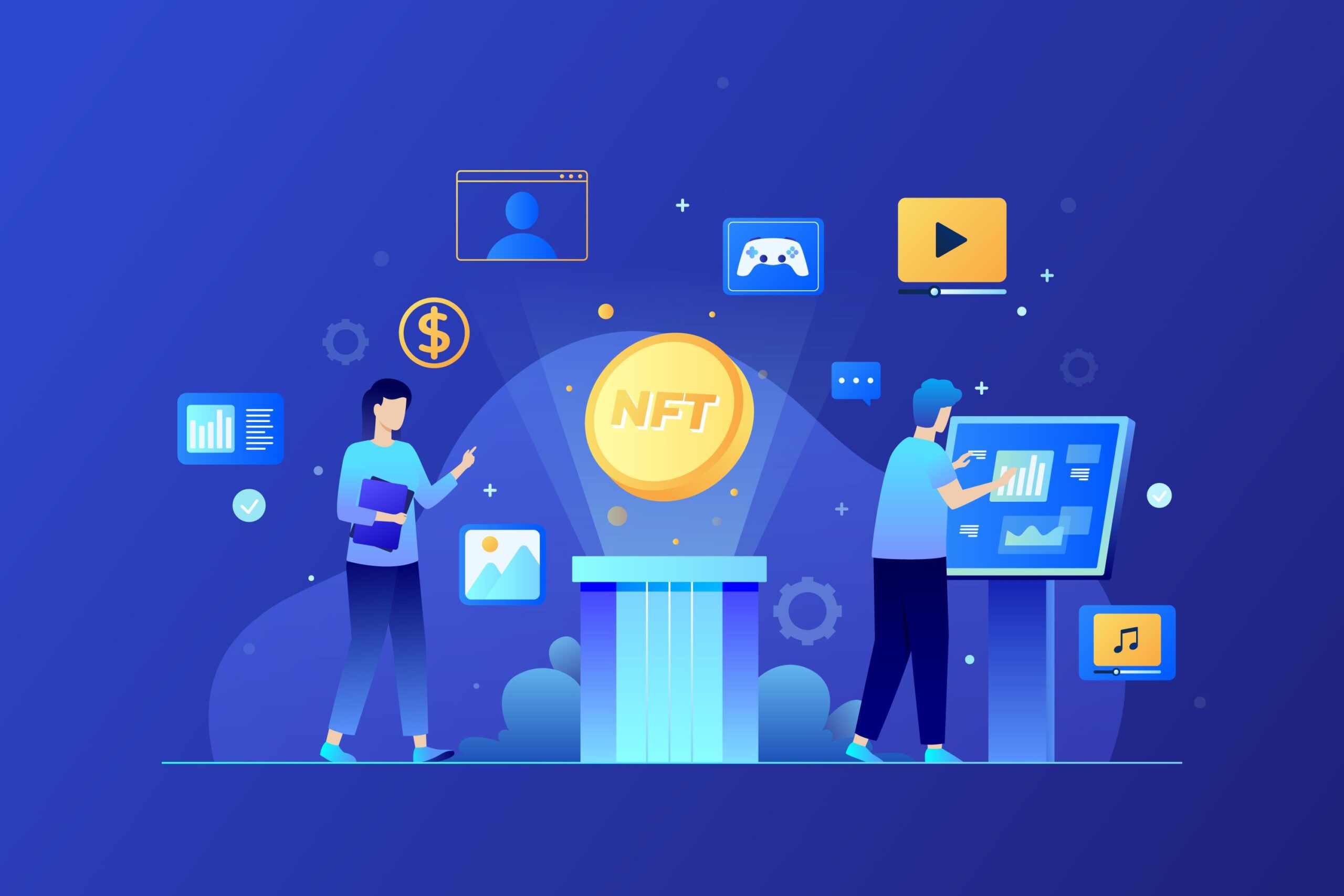In recent years, the world of finance has witnessed a groundbreaking transformation – the rise of Decentralized Finance, or DeFi. This innovative financial ecosystem, built on blockchain technology, is poised to revolutionize traditional banking systems and redefine how we interact with money. With its disruptive potential, DeFi has garnered significant attention from both investors and tech enthusiasts. In this article, we will explore the key aspects of DeFi and how it is shaping the future of finance.
What is DeFi?
DeFi, short for Decentralized Finance, is a term that encompasses a wide range of financial services and applications powered by blockchain technology. Unlike traditional banking, which relies on centralized institutions like banks and governments, DeFi operates on decentralized networks. Here are some fundamental characteristics of DeFi:
- Decentralization: DeFi eliminates the need for intermediaries by utilizing blockchain technology, allowing transactions to occur directly between users, thus reducing the risk of censorship or third-party manipulation.
- Transparency: All DeFi transactions are recorded on public ledgers, providing unparalleled transparency and visibility into financial activities, which is a stark contrast to the opacity often associated with traditional banking.
- Accessibility: DeFi is open to anyone with an internet connection and a compatible device. This accessibility breaks down geographical and socio-economic barriers, giving people around the world access to financial services.
- Innovation: DeFi constantly pushes the boundaries of financial innovation, offering a plethora of products and services, including lending, borrowing, trading, and yield farming, to name a few.
The Building Blocks of DeFi
Smart Contracts
At the heart of DeFi are smart contracts, self-executing contracts with the terms of the agreement directly written into code. These contracts automate various financial transactions and eliminate the need for intermediaries. Here’s how they work:
- Autonomy: Smart contracts run automatically when predetermined conditions are met, ensuring trust and reducing the potential for human error or manipulation.
- Security: Once deployed on the blockchain, smart contracts are tamper-proof and resistant to hacking, providing a high level of security for users.
Decentralized Exchanges (DEXs)
Traditional financial markets rely heavily on centralized exchanges to facilitate trading. DeFi introduces decentralized exchanges (DEXs) as a viable alternative:
- User Control: DEXs allow users to trade directly from their wallets, providing greater control over their assets compared to centralized exchanges.
- Liquidity Pools: DEXs use liquidity pools, where users can provide liquidity in return for fees and rewards, creating a more inclusive and democratic trading environment.
Lending and Borrowing
DeFi lending and borrowing platforms enable users to lend their assets and earn interest or borrow assets with collateral:
- Interest Earning: Lenders can earn interest on their holdings by supplying assets to lending platforms.
- Collateralized Borrowing: Borrowers can access funds by locking up collateral, reducing credit risk, and enabling decentralized lending without credit checks.
Yield Farming and Liquidity Mining
Yield farming and liquidity mining are popular DeFi strategies that reward users for providing liquidity to decentralized platforms:
- Rewards: Users receive tokens as rewards for staking or providing liquidity, often resulting in high yields compared to traditional savings accounts.
- Complex Strategies: Yield farming involves complex strategies that aim to maximize returns by moving assets between different DeFi protocols.
Advantages of DeFi
Financial Inclusion
DeFi opens up financial services to the unbanked and underbanked populations around the world:
- Global Access: Anyone with an internet connection can participate in DeFi, regardless of their location or financial background.
- Lower Barriers: DeFi reduces the barriers to entry, allowing individuals to access loans, earn interest, and participate in financial markets without relying on traditional banks.
Security and Transparency
The blockchain technology underpinning DeFi offers unparalleled security and transparency:
- Immutable Records: Transactions recorded on the blockchain are irreversible, reducing the risk of fraud and manipulation.
- Transparency: Public ledgers provide real-time access to transaction data, enhancing accountability and trust.
Autonomy and Control
DeFi empowers individuals to have greater control over their finances:
- No Intermediaries: Users interact directly with smart contracts, eliminating the need for intermediaries and reducing the risk of censorship or manipulation.
- Self-Custody: Users retain control of their private keys and assets, reducing the risk of asset seizure or loss.
Challenges Facing DeFi
While DeFi holds immense promise, it also faces several challenges:
Regulatory Uncertainty
DeFi operates in a regulatory gray area, with governments and regulators struggling to keep pace with its rapid evolution:
- Compliance: The lack of regulatory clarity can hinder DeFi’s growth and adoption, as users and businesses remain uncertain about their legal obligations.
- Risks: Regulatory intervention may bring compliance challenges and potential restrictions, impacting the open and permissionless nature of DeFi.
Security Risks
While blockchain technology is secure, DeFi is not immune to risks:
- Smart Contract Vulnerabilities: Bugs or vulnerabilities in smart contracts can result in significant financial losses.
- Rug Pulls: Some DeFi projects turn out to be scams, resulting in the loss of user funds.
Scalability
The scalability of blockchain networks can be a bottleneck for DeFi:
- Network Congestion: High demand can lead to congestion and increased transaction fees, limiting accessibility and usability.
- Ethereum’s Challenge: Ethereum, the most popular DeFi platform, has faced scalability issues, leading to the exploration of layer 2 solutions and alternative blockchains.
The Future of DeFi
DeFi continues to evolve and expand, with several trends shaping its future:
Interoperability
DeFi projects are increasingly working towards interoperability, allowing assets and data to move seamlessly between different blockchains:
- Cross-Chain Solutions: Solutions like wrapped tokens and bridges enable assets to move between different blockchain networks, increasing flexibility.
- Reduced Fragmentation: Interoperability reduces fragmentation in the DeFi ecosystem, making it more user-friendly.
Institutional Adoption
As DeFi matures, institutional players are showing interest:
- Institutional Investment: Institutions are exploring DeFi as an investment option, potentially bringing substantial capital into the ecosystem.
- Regulatory Clarity: Clearer regulations may encourage more institutions to participate in DeFi.
DeFi 2.0
DeFi is entering a new phase, often referred to as DeFi 2.0:
- Advanced Use Cases: DeFi 2.0 explores advanced use cases beyond lending and borrowing, including decentralized insurance, prediction markets, and more.
- Improved User Experience: Projects are focusing on enhancing the user experience to make DeFi more accessible to the masses.
Conclusion
Decentralized Finance (DeFi) represents a profound shift in the world of finance. Its core principles of decentralization, transparency, and accessibility challenge the traditional banking system’s status quo. While DeFi faces regulatory hurdles, security risks, and scalability challenges, its potential to reshape finance and provide financial inclusion to the unbanked is undeniable.
As DeFi continues to evolve, it’s crucial for users, developers, and regulators to work together to strike a balance between innovation and security. Whether DeFi eventually replaces or coexists with traditional banking, one thing is clear: it has already left an indelible mark on the financial



